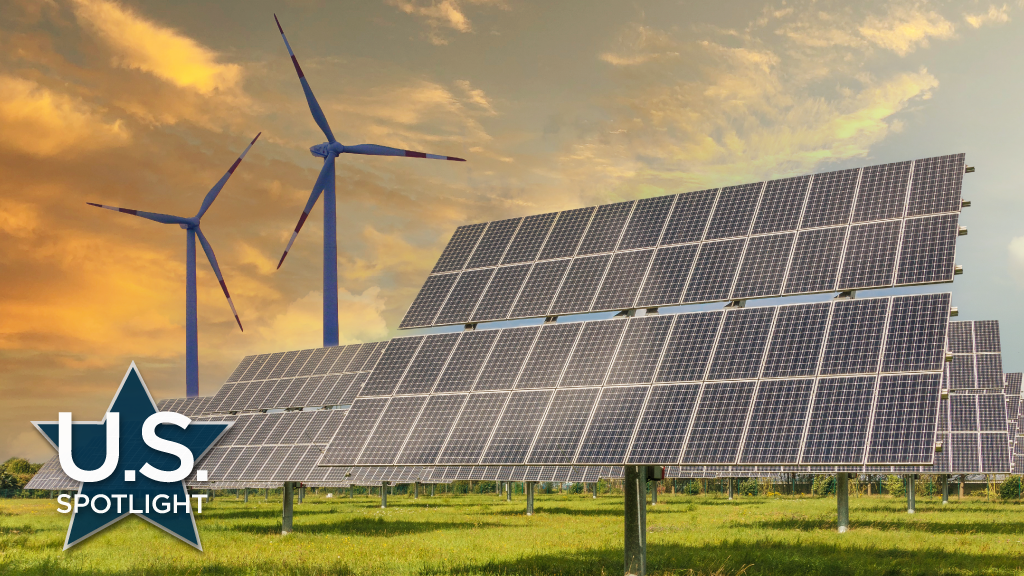Texas is in the midst of a population, investment and construction boom. State population has grown by four million over the past decade to just under 30 million, with most concentrated in major metropolitan areas.
Expansion of the state’s economy has continued through 2022, according to Adriana Cruz, executive director of Texas Economic Development and Tourism.
“Texas experienced a whopping 8.2 per cent increase in GDP in the third quarter of 2022 — more than double the national average.”
Providing electrical power matching this growth is a challenge, particularly as peaks and outages during extreme summer heat events and winter storms become more common.
Rather than rely solely on its own supply of fossil fuels for power generation, Texas is increasingly turning to wind and solar energy sources.
According to the U.S. Energy Information Agency, as of mid-2022 Texas led the country with over 30GW of wind installations and ranked second in solar with 8.6GW. In fact, renewables are likely to overtake natural gas for power generation in 2023.
The Electric Reliability Council of Texas (ERCOT), which operates the Texas’s electrical grid, says continued expansion means solar and wind together will generate 37 per cent of the state’s electrical power in 2023, slightly more than the electricity generated by natural gas plants. In combination with nearly 1GW of battery backup, ERCOT anticipates there is sufficient installed generating capacity available to serve the system-wide forecasted peak demand through to February 2023.
The state has important geographical advantages when it comes to both wind and solar generation.
The famous Texas sunshine makes it a natural for solar generation. It offers expansive rural areas situated in a natural high-wind belt. With landowners enjoying a financial payback, zoning approval is rarely a problem. Boosted by a favourable tax system for both solar and wind investment, renewables also enjoy bi-partisan political support for their ability to create jobs.
“Everything’s bigger in Texas” including its renewable energy facilities.
The Road Runner solar farm, five miles northeast of McCarney in Upton County, spans 2,770 acres and holds more than 1.2 million bifacial solar photovoltaic modules.
The state’s biggest wind generating facility, Sweetwater Wind Farm, opened in 2007 and covers over 144 square miles of West Texas. Today, its 392 turbines generate nearly 590MW of power for Austin Energy and others.
Renewable energy sources enjoy state-wide support from residents because of their ability to contain electricity costs.
According to an October 2022 study released by IdeaSmiths LLC titled The Impact of Renewables in ERCOT, Joshua Rhodes writes the widespread adoption of renewables reduced wholesale electricity costs between 2010 and August 2022 by approximately $27.8 billion.
Rhodes also notes renewable energy generation saved 244 billion gallons of water during that same period, important to drought-prone areas, and reduced health care and related environmental costs by another several billion dollars. All told, he estimates the total benefits to Texas residents in the ERCOT service territory to be between $38.7 billion and $106 billion.
More large-scale renewable projects are planned or underway.
Missouri-based Savion Energy expects construction to begin in 2023 on two solar power plants, named Dove Run and Sun Cactus. Built on private land in Duval County west of Corpus Christi, the plants will comprise a total of 400,000 solar panels, sufficient to power 58,000 homes when fully connected to the grid in 2025.
Foreign investment has increased as well.
Bechtel has been selected to build a 272 MWdc solar facility for Sabanci Renewables, Inc., a subsidiary of Sabanci Holding, one of Turkey’s leading companies.
Project construction in Fort Bend County will begin in the first quarter of 2023. At its completion, expected in 2024, the Sabanci farm will provide enough electricity to power approximately 40,000 homes and save an estimated 600,000 metric tons of CO2 emissions per year.
Municipalities are starting to jump on board with renewables.
The Dallas Times reports Dallas County has contracted renewable energy from a solar farm in Fort Bend County to power the 55 buildings it owns. With the number of over 100° F degree days expected to nearly double by 2036 compared with 2001-2020, county leaders believe it’s important to demonstrate how wind and solar can dependably supply power to homes and businesses, while helping curb further temperature increases in the region.
The fossil fuel industry has been a dominant force in Texas politics and business for decades. When it comes to electrical power generation, however, the future appears to belong to renewables.











Recent Comments
comments for this post are closed